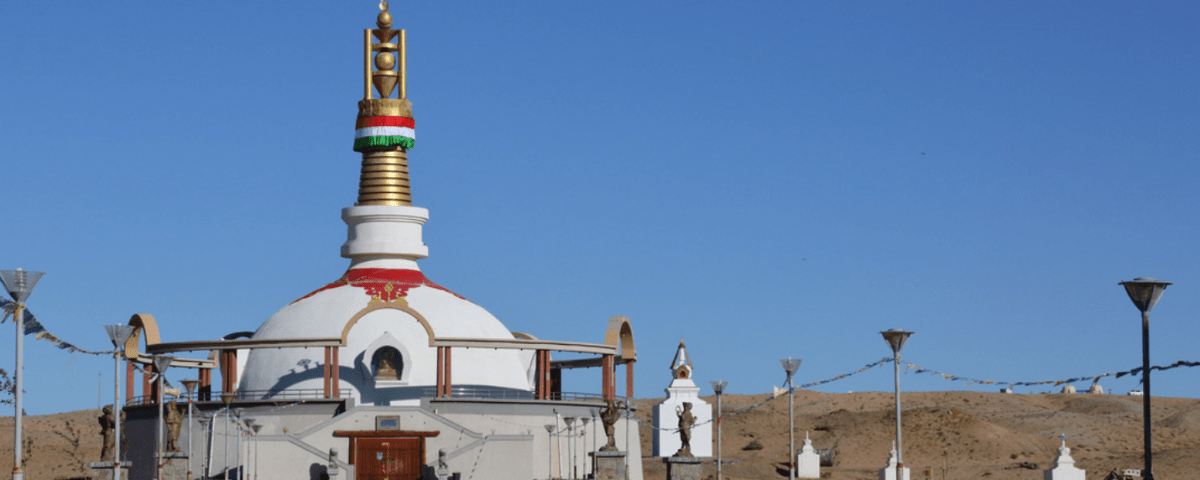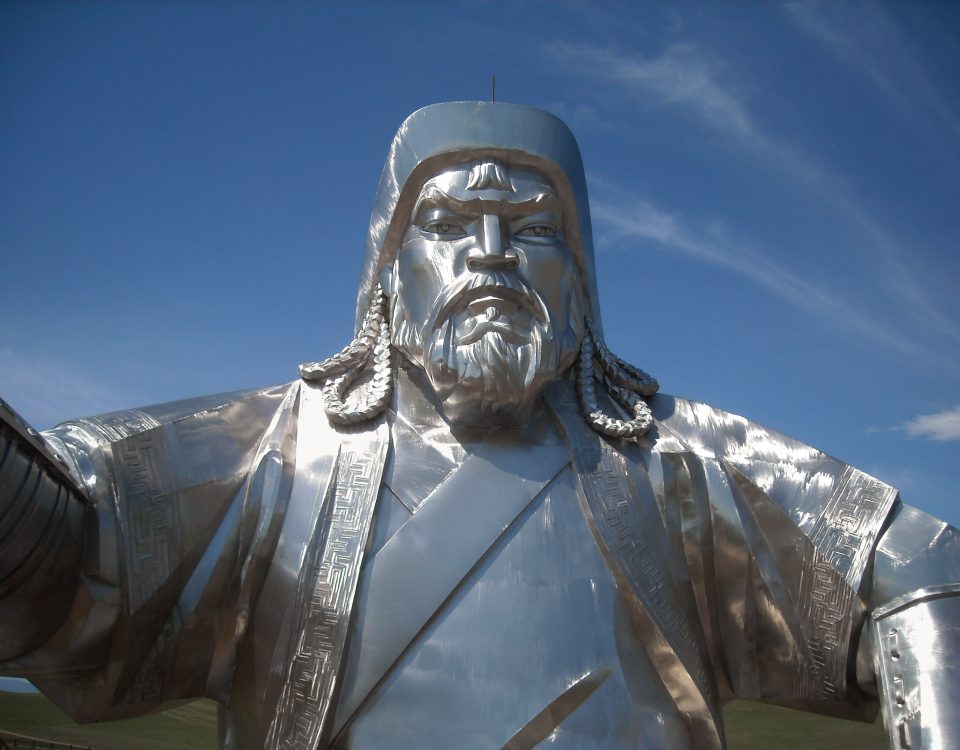Khamariin Khiid Monastery

Mongolia Introduced – A Virtual Tour
June 10, 2020
Our Virtual Tour Of Mongolia’s Gobi Desert
June 23, 2020Khamariin Khiid Monastery
In a country with a rich Buddhist heritage, why should you visit Khamariin Khiid Monastery? Well, first you have to understand who Danzan Ravjaa was.
Danzan Ravjaa lived from 1803-1856 and was a revered figure in Mongolia although little known in the West. He established Khamariin Khiid in the 1830s – not only was it a place of religion but also a cultural and academic centre housing 500 permanent residents at its peak. The compound consisted of four colleges, which taught general studies, astronomy, art, and theatre. He opened a popular children’s school training children as artists, sculptors, singers and dancers as well as giving basic and vocational training. Danzan Ravjaa also established a large library in the monastery with books he collected during his extensive travels across Mongolia, China and Tibet.

Khamariin Khiid Monastery captured through the lens of our guest Marian Herz

The main temple at Khamariin Khiid Monastery captured through the lens of our guest Marian Herz
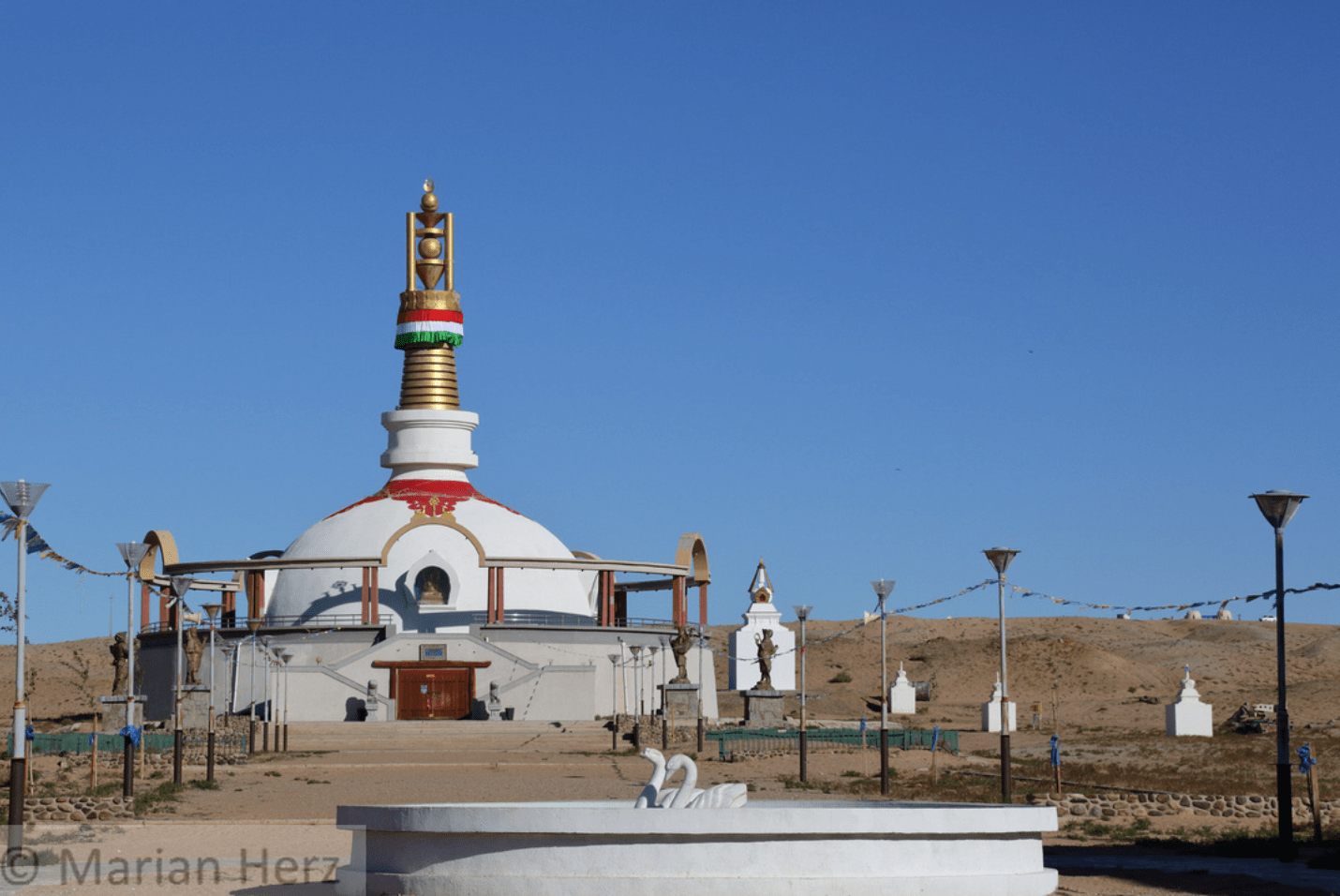
The stupa at Khamariin Khiid Monastery as captured by our guest Marian Herz
Danzan Ravjaa was an intellectual as well as a skilled artist, composer, educator, playwright and reformist. He was the founder of 11 institutions and monasteries across Mongolia’s Gobi Desert and was the first to allow women to enrol at his school believing that women were entitled to an equal education. He was recognised as the Fifth Noyon Incarnate Lama of the Gobi, also known as “Lord of the Gobi”.
Khamariin remains an important spiritual centre – a monastery as well as a place of pilgrimage for Mongolians and followers of Buddhism. Mongolians focus on the energy centre known as Shambala (a legendary kingdom located in Central Asia, but whose precise place remains unknown. It’s a quiet place, where all the inhabitants could live in joy and harmony. Mongolian people think that the entry to this kingdom is at the monastery).
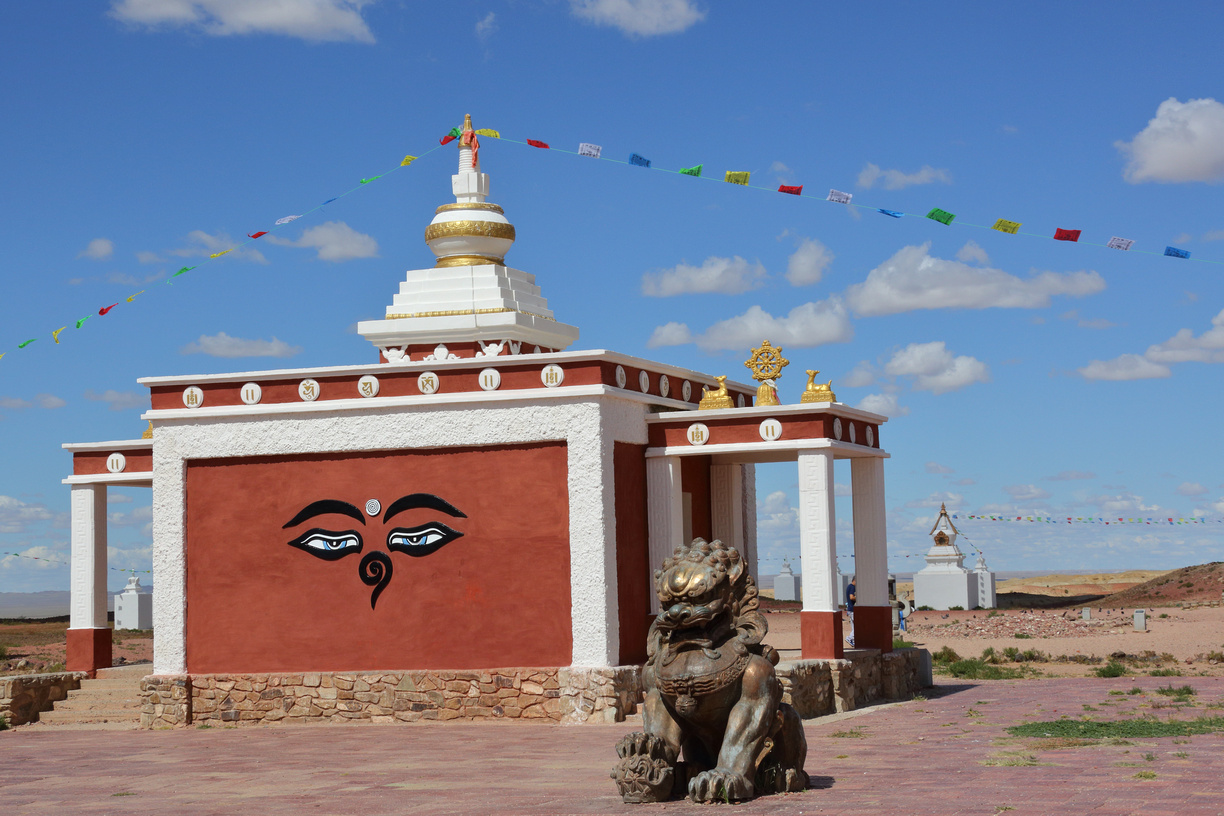
The entrance to Shambala as captured through the lens of our guest Marian Herz
Members of our team recently visited on a short weekend break from Ulaanbaatar.
The monastery is located in Dorngobi Aimag – just 50km on asphalt road from the provincial capital of Saishand. Although 450km from Ulaanbaatar, the asphalt road makes for relatively easy travelling. An alternative is a domestic train on the Trans-Mongolian railway. Here’s a quick tour of the monastery through the informal photos of our trip assistants Odnoo and Unuruu.
Shambala is located within the monastery site – you’ll know you’re at the entrance to Shambala when you see the eyes of Buddha with a third eye in the middle. This is the energy eye. You are meant to stand in the stone circle in front of the eyes and stare at the centre of the energy eye until you feel the energy entering you, only then should you enter Shambala.
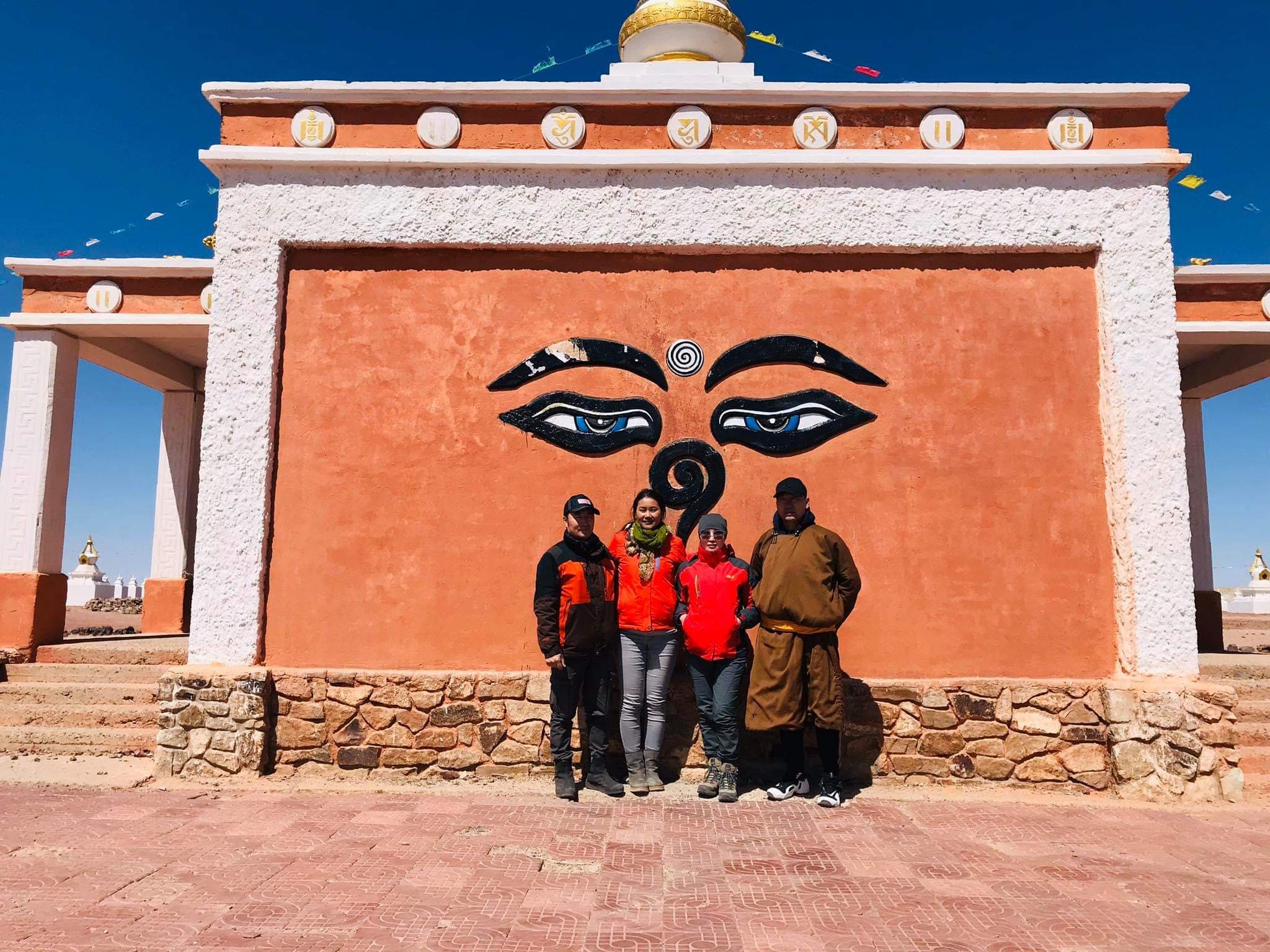
Danzan Ravjaa taught his disciples the “burning of the sins” ritual and this is something you can also do. You write all your sins on paper, and burn the paper in a hole in the rocks, at the entrance to Shambhala. Danzan Ravjaa educated his monks to get rid of pride, jealousy and greed, through this ritual, before entering the holy Shambhala which is a place of peace, tranquillity and happiness.
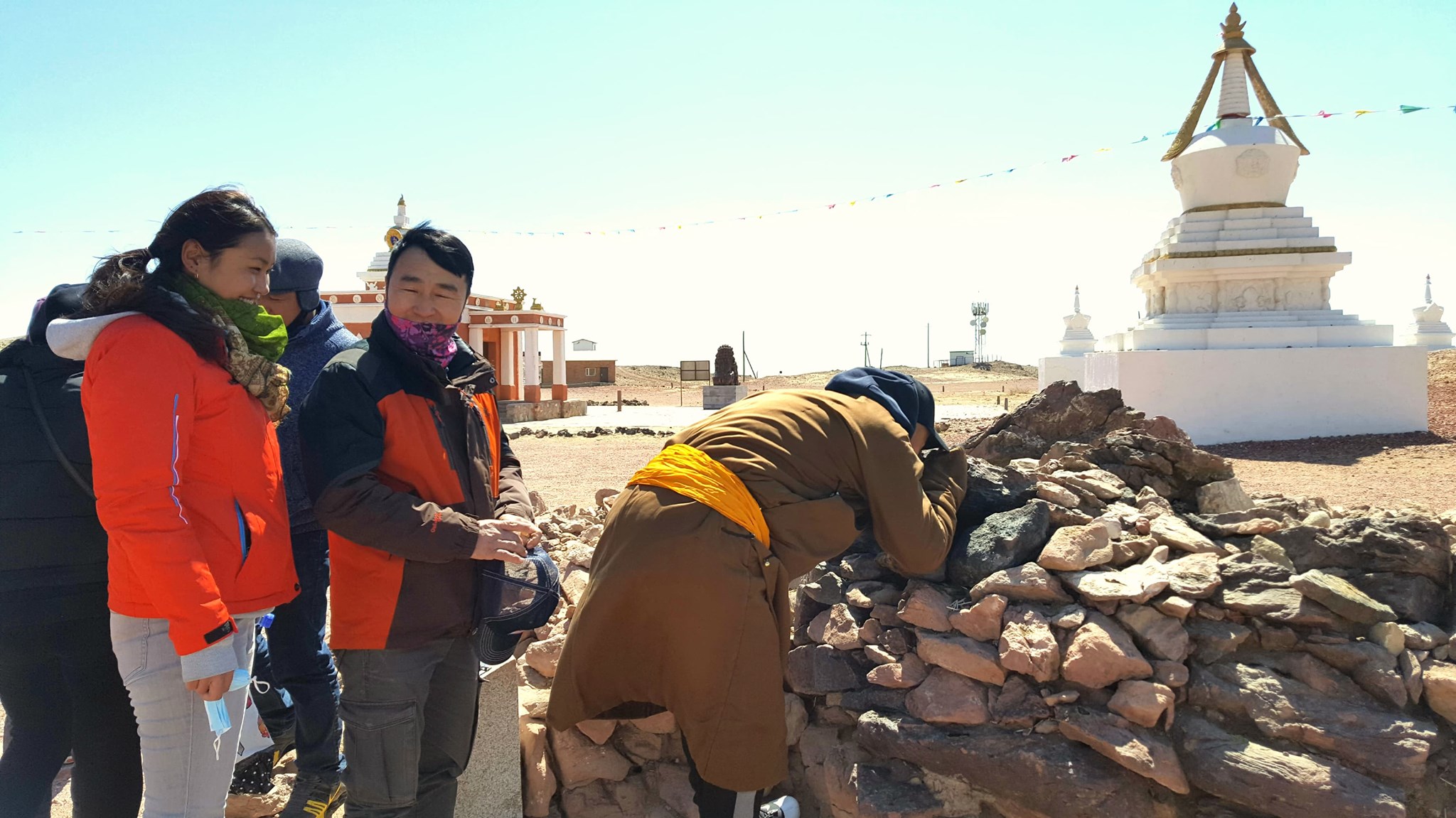
You also can’t help but notice a large ovoo (sacred stone shrine) in the shape of a woman’s breasts. Created by Danzan Ravjaa, only women are allowed to participate in the ceremony around this ovoo – believed to bring energy to women, enabling them to carry out their feminine roles.


Another ritual is to lie down on the ground, absorbing the energy of Shambala.

Located close to the monastery are meditation caves where Danzan Ravjaa used to meditate for 108 days at a time; 108 is a holy number in Buddhism. Monks meditate in complete isolation, with little food, in an effort to ignore hunger, as did Danzan Ravjaa. Visitors to these caves go through what is known as the birth hole. To go through one must hold the hands of other visitors, and go through without letting go, thereby expressing the unity of humanity.

But what is it like to visit Khamariin Khiid?
In the words of Odnoo:
‘It is believed that the area surrounding the monastery radiates with a spiritual energy fostered by the Gobi Desert. When I laid down and looked at the sun from the ground, I felt so relaxed & took energy from the sun and earth.’
And our Unuruu:
‘It was a sea many many years ago. The sun rising and setting looks beautiful. It seems the sun grows from the steppe. Also, it seemed my eyes relaxed when I saw the big steppe.’
For more ideas on the Gobi, why not look at our Gobi Desert blog post? Alternatively, have a look at the range of Mongolia tours and experiences we offer including those that visit the immensity of the Gobi.


